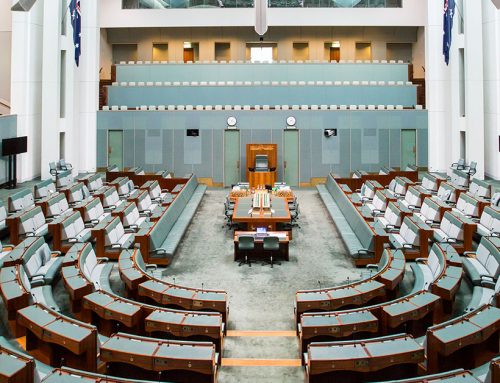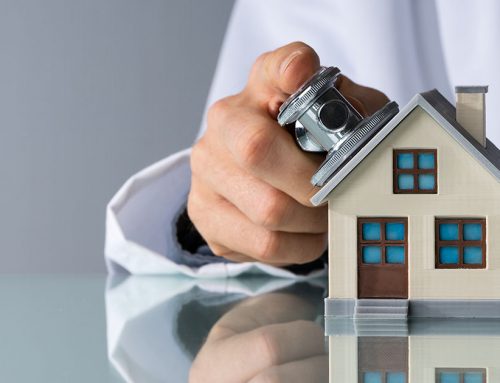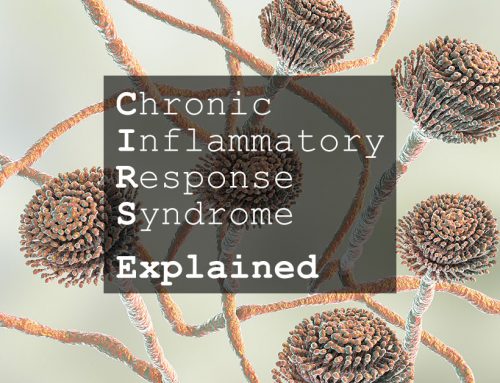Biotoxin Research Database (Google sheet)
The most complete list of studies intended for the database is now in the linked EndNote file:
Biotoxin Research Database (Inhaled Bioaerosols) EndNote Library (21-11-24)
Research Database (embed)CIRS specificChildrenMore Studies
Peer-Reviewed Journal Papers (* non peer-reviewed)
- Shoemaker, R., Meinhardt, J., Heyman, A., & Lark, D. (2021). Exposure to Actinobacteria resident in water-damaged buildings and resultant immune injury in Chronic Inflammatory Response Syndrome. Medical research archives, 9(10). https://doi.org/10.18103/mra.v9i10.2585
- Shoemaker R., McMahon S, Heyman, A., Lark, D, van der Westhuizen, M., & Ryan, J. (2021).Treatable metabolic and inflammatory abnormalities in Post COVID Syndrome (PCS) define the transcriptomic basis for persistent symptoms: Lessons from CIRS. Medical research archives, 9(7). https://doi.org/10.18103/mra.v9i7.2493
- Shoemaker, R., Neil, V., Heyman, A., van der Westhuizen, M., McMahon, S. & Lark, D. (2021). Newer Molecular Methods Bring New Insights into Human- And Building-Health Risk Assessments from Water-Damaged Buildings: Defining Exposure and Reactivity, the Two Sides of Causation of CIRS-WDB Illness. Medical research archives, 9(3), 1-36. https://doi.org/10.18103/mra.v9i3.2358
- Schrantz, M., Banta, J., Charlton, J., Heiblum, J., Johnson, K., McMahon, S., Schwartz, L., Weatherman, G., Weber, B., Vukelic, A., Shoemaker, R. (2021). Indoor Environmental Professional Panel of Surviving Mold consensus statement for microbial remediation 2020. Medical Research Archives, 9(1), 1-25. https://doi.org/10.18103/mra.v9i1.2327
- Shoemaker, R.C. (2020). Metabolism, molecular hypometabolism and inflammation: Complications of proliferative physiology include metabolic acidosis, pulmonary hypertension, T reg cell deficiency, insulin resistance and neuronal injury. Trends diabetes metabolism, 3,1-15. https://doi.org/10.15761/TDM.1000118
- Dooley, M. & McMahon, S.W. (2020). A comprehensive review of mold research literature from 2011 – 2018. Internal medicine review, 6(1). http://doi.org/10.18103/imr.v6i1.836
- *Heyman, A., & Shoemaker, R.C. (2019, November 1). The fulfillment of hope from GENIE continues. Townsend Letter.
- Shoemaker, R.C. & Lark, D. (2019). Urinary Mycotoxins: A Review of Contaminated Buildings and Food in Search of a Biomarker Separating Sick Patients from Controls. Internal medicine review, 5(6). PDF | Townsend letter #438
- *Shoemaker, R.C., Lark, D. & Ryan, J.C. (2019). Moldy Buildings, CIRS, Sick People, and Damaged Brains, Parts 1-5. Townsend letter, Part 1, #433 Part 2, Part 3, Part 4, Part 5
- Shoemaker, R.C., Johnson, K., Lysander, J., Berry, Y., Dooley, M., Ryan, J. & McMahon, S. (2018). Diagnostic process for chronic inflammatory response syndrome (CIRS): A consensus statement report of the consensus committee of surviving mold. Internal medicine review, (6)5 May 2018
- Shoemaker, R.C., Heyman, A., Mancia, A. & Ryan, J.C. (2017). Inflammation Induced Chronic Fatiguing Illnesses: A steady march towards understanding mechanisms and identifying new biomarkers and therapies. Internal medicine review, (3)10. http://doi.org/10.18103/imr.v3i10.585 | PDF
- McMahon, S, Kundomal, K. & Yangalasetty, S. (2017). Pediatrics Norms for Visual Contrast Sensitivity Using an APT VCS Tester. Medical research archives, 5(5) May 2017. https://doi.org/10.18103/mra.v5i5.1295
- McMahon, S. (2017). An Evaluation of Alternate Means to Diagnose Chronic Inflammatory Response Syndrome and Determine Prevalence. Medical research archives, 5(3), March 2017. https://doi.org/10.18103/mra.v5i3.1125
- Shoemaker, R., Katz, D., Ackerley, M., Rapaport, S., McMahon, S., Berndtson, K. & Ryan, J. (2017). Intranasal VIP safely restores volume to multiple grey matter nuclei in patients with CIRS. Internal medicine review, (3)4. http://doi.org/10.18103/imr.v3i4.412
- Ryan, J.C. & Shoemaker. R.C. (2016). RNA-Seq on patients with chronic inflammatory response syndrome (CIRS) treated with vasoactive intestinal peptide (VIP) shows a shift in metabolic state and innate immune functions that coincide with healing. Medical research archives, 4(7). https://doi.org/10.18103/mra.v4i7.862
- Gunn, S.R., Gunn, G.G. & Mueller, F.W. (2016). Reversal of refractory ulcerative colitis and severe chronic fatigue syndrome symptoms arising from immune disturbance in an HLA-DR/DQ genetically susceptible individual with multiple biotoxin exposures. American journal of case reports, 2016(17), 320–325. https://doi.org/10.12659/AJCR.896949 PMID 27165859 PMC491373
2 - McMahon, S.W., Shoemaker, R.C. & Ryan, J.C. (2016). Reduction in forebrain parenchymal and cortical grey matter swelling across treatment groups in patients with inflammatory illness acquired following exposure to water-damaged buildings. Journal of neuroscience and clinical research, 2016, 1(1).
- Bredesen D.E. (2016). Inhalational Alzheimer’s disease: an unrecognized – and treatable – epidemic. Aging, 8(2), 304-13. https://doi.org/10.18632/aging.100896 PMID 26870879
- Schwartz, L., Weatherman, G., Schrantz, M., Spakes, W., Charlton, J., Berndtson, K. & Shoemaker, R. (2016). Indoor environmental professionals panel of surviving mold – consensus statement. SurvivingMold.com | Full text
- Ryan, J.C., Wu, Q., & Shoemaker, R.C. (2015). Transcriptomic signatures in whole blood of patients who acquire a chronic inflammatory response syndrome (CIRS) following an exposure to the marine toxin ciguatoxin. BMC med genomics, (8)15. https://doi.org/10.1186/s12920-015-0089-x PMID 25889530
- *Berndtson, K., McMahon, S., Ackerley, M., Rapaport, S., Gupta, S. & Shoemaker, R.C. (2015). Medically sound investigation and remediation of water-damaged buildings in cases of CIRS-WDB – Consensus statement – Pt 1. Center for research on biotoxin associated illnesses. PDF
- *Schwartz, L., Weatherman, G., Schrantz, M., Spakes, W., Charlton, J., Berndtson, K. & Shoemaker, R. (2016). Indoor environmental professionals panel of surviving mold – consensus statement. PDF
- *Shoemaker, R., McMahon, S., Ryan, J., Ackerley, M., DiTulio, M., Berndtson, B., Heyman, A. & Jaffe, R. (2015). Correlation of volumetric brain imaging with Western blot testing for Lyme Disease. Poster session. NorVect conference, 2015. PDF
- Shoemaker, R.C., House, D.E., & Ryan, J.C. (2014). Structural brain abnormalities in patients with inflammatory illness acquired following exposure to water-damaged buildings: A volumetric MRI study using NeuroQuant. Neurotoxicology and teratology, 45, 18-26. https://doi.org/10.1016/j.ntt.2014.06.004 PMID 24946038 | PDF
- Shoemaker, R.C., House, D.E., & Ryan, J.C. (2013). Vasoactive intestinal polypeptide (VIP) corrects chronic inflammatory response syndrome (CIRS) acquired following exposure to water-damaged buildings. Health, 5(3) 2013, 396-401. https://doi.org/10.4236/health.2013.53053
- Shoemaker, R.C., House, D.E., & Ryan, J.C. (2010). Defining the neurotoxin derived illness chronic ciguatera using markers of chronic systemic inflammatory disturbances: a case/control study. Neurotoxicology and teratology, 32(6), 633-9. https://doi.org/10.1016/j.ntt.2010.05.007 PMID 20685390 | PDF
- *Shoemaker, R.C. & Maziel, M.S. (2009). Exposure to interior environments of water-damaged buildings causes a CFS-like illness in pediatric patients: a case/control study. Bulletin of the IACFS/ME 2009, 17(2). PDF
- *Shoemaker, R.C. & Maizel, M. (2008). Innate immunity, MR spectroscopy, HLA DR, TGF beta-1, VIP and capillary hypoperfusion define acute and chronic human illness acquired following exposure to water-damaged buildings. International healthy buildings. PDF
- Shoemaker, R.C., Giclas, P, Crowder, C, House, D.E., & Glovsky, M. (2008). Complement split products C3a and C4a are early markers of acute lyme disease in tick bite patients in the United States. International archives of allergy and immunology, 146(3), 255-61. https://doi.org/10.1159/000116362 PMID 18270493 | PDF
- Shoemaker, R.C., Hudall, H.K., House, D.E., Van Kempen, A., & Pakes, G. (2006). Atovaquone plus cholestyramine in patients coinfected with Babesia microti and Borrelia burgdorferi refractory to other treatment. Advances in therapy, 23(1), 1-11. https://doi.org/10.1007/bf02850341 PMID 16644602 | PDF
- Shoemaker, R.C., & House, D.E. (2006). Sick building syndrome (SBS) and exposure to water-damaged buildings: time series study, clinical trial and mechanisms. Neurotoxicology and teratology, 28(5), 573-88. https://doi.org/10.1016/j.ntt.2006.07.003 PMID 17010568 | PDF
- Hudnell, H.K. (2005). Chronic biotoxin-associated illness: multiple-system symptoms, a vision deficit, and effective treatment. Neurotoxicology and teratology, 27(5), 733-43. https://doi.org/10.1016/j.ntt.2005.06.010 PMID: 16102938
- Shoemaker, R.C. & House, D.E. (2004). A time-series study of sick building syndrome: chronic, biotoxin-associated illness from exposure to water-damaged buildings. Neurotoxicology and teratology, 27(1), 29-46. https://doi.org/10.1016/j.ntt.2004.07.005 PMID 15681119 | PDF
- *Shoemaker, S., Rash, J. & Simon, E. (2003). Sick building syndrome in water damaged buildings: generalization of the chronic biotoxin-associated illness paradigm to indoor toxigenic-fungi exposure. Bioaerosols, fungi, bacteria, mycotoxins and human health. Johanning, E (editor). PDF
- Shoemaker, R.C. (2001). Residential and recreational acquisition of possible estuary-associated syndrome: a new approach to successful diagnosis and treatment. Environmental health perspectives, 109 (suppl. 5), 791-6. https://doi.org/10.1289/ehp.01109s5791 PMID 11677191 PMC1240613
- *Shoemaker, R.C., Hudnell K.H., House, D.E. & Domenico, P. (2003). Association of nasal carriage of methicillin resistant and multiple antibiotic resistant coagulase negative staphylococci species with deficiency of alpha melanocyte stimulating hormone in Chronic Fatigue Syndrome: implication for expanded treatment options. American society of microbiology, 2003. PDF
- *Shoemaker, R.C. (2003). Linkage disequilibrium in alleles of HLA DR: differential association with susceptibility to chronic illness following exposure to biologically produced neurotoxins. American society of microbiology. 2003. PDF
- Grattan, L.M., Oldach, D., Perl, T.M., Lowitt, M.H., Matuszak, D.L., Dickson, C., Parrott, C., Shoemaker, R.C., Kauffman, C.L, Wasserman, M.P., Hebel, J.R., Charache, P. & Morris Jr, J.G. (1998). Learning and memory difficulties after environmental exposure to waterways containing toxin-producing Pfiesteria or Pfiesteria-like dinoflagellates. Lancet, 353(9127):532-9. https://doi.org/10.1016/s0140-6736(98)02132-1 | PDF
Books
- Shoemaker, R., McMahon, S. & Heyman, A. (2020). The art and science of CIRS medicine. Surviving Mold.
- Shoemaker, R. (2014). State of the art answers to 500 mold questions. Amazon Aus | US
- Shoemaker, R. (2010). Surviving mold: Life in the era of dangerous buildings. Amazon Aus) | US
- Shoemaker, R. (2005). Mold Warriors: Fighting America’s hidden health threat. Amazon Aus | US
- Shoemaker, R. (2001). Desperation Medicine. Amazon Aus | US
- Berry, Y. (2014). A physician’s guide to understanding & treating biotoxin illness. Surviving mold.
Patents
- Shoemaker, R., & Ryan, J. (2014). US Patent No. 20,140,046,143 A. Washington, DC: U.S. Patent and Trademark Office. Google patents
- Shoemaker, R., & Hudnell, H. (2003). Us Patent No. 20,030,219,400 A1. Washington, DC: U.S. Patent and Trademark Office. Google patents
Complete Works
- Visit Surviving Mold for the complete library of scientific papers authored or co-authored by Dr. Ritchie Shoemaker.
Children
A preliminary list (22) of studies on the multisystem effects of mould and other biotoxin formers on children is linked below:
More Studies
In addition to the Biotoxin research database you can find a list of peer-reviewed studies, reviews, and critiques (over 400) linked below:
Biomarkers
C3aC4aLeptinMARCoNSMSHMMP-9NeuroQuantTGF-b1VCSVEGFVIP
- Albrecht, E.A. & Ward, P.A. (2004). Complement-induced impairment of the innate immune system during sepsis. Current allergy and asthma reports, 4(5),359-64. PMID 15283874
- Hass, P.J. & van Strijp, J. (2007). Anaphylatoxins: their role in bacterial infection and inflammation. Immunological research, 37(3),161-75. PMID 17873401
- Hawksworth, O.A., Li, X.X., Coulthard, L.G., Wolvetang, E.J & Woodruff, T.M. (2017). New concepts on the therapeutic control of complement anaphylatoxin receptors. Molecular immunology, 2017 (89),36-43. doi: 10.1016/j.molimm.2017.05.015 PMID 28576324
- Bennett, S., Grant, M., Creese, A.J., Mangialasche, F., Cecchetti, R., Cooper, H.J., Mecocci, P. & Aldred, S. Plasma levels of complement 4a protein are increased in Alzheimer’s disease. Alzheimer’s disease and associated disorders, 26(4), 329-34. doi: 10.1097/WAD.0b013e318239dcbd PMID 22052466
- Nijs, .J, Nees, A., Paul, L., De Kooning, M., Ickmans, K., Meeus, M. & Van Oosterwijck, J. (2014). Altered immune response to exercise in patients with chronic fatigue syndrome/myalgic encephalomyelitis: a systematic literature review. Exercise immunological review, 20,94-116. PMID 24974723
- Pągowska-Klimek, I., Świerzko, A.S., Michalski, M., Głowacka, E., Szala-Poździej, A., Sokołowska, A., Moll, M., Krajewski, W.R., Romak, J. & Cedzyński, M. (2015). Activation of the lectin pathway of complement by cardiopulmonary bypass contributes to the development of systemic inflammatory response syndrome after pediatric cardiac surgery. Clinical and experimental immunology. doi: 10.1111/cei.12763 PMID 26703090
- Panelius, J. & Meri, S. (2015). Complement system in dermatological diseases – fire under the skin. Frontiers in medicine, 29(2), 3, doi: 10.3389/fmed.2015.00003 PMID 25688346
- Tatomir, A., Talpos-Caia, Al, Ansselmo, F., Kruszewski, A.M., Boodhoow, D., Rus, V. & Rus, H. (2017). The complement system as a biomarker of disease activity and response to treatment in multiple sclerosis. Immunological research, 65(6),1103-1109. doi: 10.1007/s12026-017-8961-8 PMID 29116612
- Hornig, .1, Montoya, J.G,, Klimas, N.G., Levine, S., Felsenstein, D., Bateman, L., Peterson, D.L., Gottschalk, C.G., Schultz, A.F., Che ,X., Eddy, M.L., Komaroff, A.L. & Lipkin, W.I. (2015). Distinct plasma immune signatures in ME/CFS are present early in the course of illness. Science advances, 2015 Feb;1(1). pii: e1400121. doi: 10.1126/sciadv.1400121 PMID 26079000
- Kwon, O., Kim, K.W. & Kim, M.S.. (2016). Leptin signalling pathways in hypothalamic neurons. Cellular and molecular life sciences, Jan 19, 1-21. PMID 26786898
- Milaneschi, Y., Lamers, F., Bot, M., Drent, M.L. & Penninx, B.W. (2015). Leptin dysregulation is specifically associated with major depression with atypical features: evidence for a mechanism connecting obesity and depression. Biological psychiatry. doi: 10.1016/j.biopsych.2015.10.023 PMID 26742925
- Stringer, E.A., Baker, K.S., Carroll, I.R., Montoya, J.G., Chu, L, Maecker, H.T. & Younger, J.W. Daily cytokine fluctuations, driven by leptin, are associated with fatigue severity in chronic fatigue syndrome: evidence of inflammatory pathology. Journal of translation medicine, 16(5), 583-9. doi: 10.1186/1479-5876-11-93 PMID PMC3637529
- Butt, H. L., Dunstan, R. H., McGregor, N. R., Roberts, T. K., Zerbes, M., & Klineberg, I. J. (1998). An association of membrane damaging toxins from coagulase-negative staphylococci and chronic orofacial muscle pain. Journal of medical microbiology, 47(7), 577–584. https://doi.org/10.1099/00222615-47-7-577 | PDF
- Klineberg, I., McGregor, N., Butt, H., Dunstan, H., Roberts, T., & Zerbes, M. (1998). Chronic orofacial muscle pain: a new approach to diagnosis and management. The alpha omegan, 91(2), 25–28. PMID 9927897
- McGregor, N. R., Zerbes, M., Niblett, S. H., Dunstan, R. H., Roberts, T. K., Butt, H. L., & Klineberg, I. J. (2003). Coagulase-negative staphylococcal membrane-damaging toxins, pain intensity, and metabolic changes in temporomandibular disorder patients with chronic muscle pain. Journal of orofacial pain, 17(2), 125–132. PMID 12836500 | PDF
- Metcalf, L., McGregor, N. & Roberts, T.(2004). Membrane damaging toxins from coagulase-negative staphylococcus are associated with self-reported temporomandibular disorder (TMD) in patients with chronic fatigue syndrome. Journal of chronic fatigue syndrome, 12(3) 25-43. doi: 10.1300/J092v12n03_03
- Richards, R., McGregor, N. & Roberts, T. (2004). Association between oxidative damage markers and self-reported temporomandibular dysfunction symptoms in patients with chronic fatigue syndrome. Journal of chronic fatigue syndrome, 12(3), 45-51. doi: 0.1300/J092v12n03_04 | PDF
- Colombo, G., Buffa, R., Bardella, M.T., Garofalo, L., Carlin, A., Lipton, J.M. & Catania, A. (2003). Anti-inflammatory effects of alpha-melanocyte-stimulating hormone in celiac intestinal mucosa. Neuroimmunomoudlation, 10(4),208-16. PMID 12584408
- Singh, M. & Mukophadhyay, K. (2014). Alpha-melanocyte stimulating hormone – an emerging anti-inflammatory antimicrobial peptide (Review). BioMed research international, 2014. doi: 10.1155/2014/874610 PMID 25140322
- Taylor, A.W & Namba, K. (2001). In vitro induction of CD25+CD4+regulatory T cells by the neuropeptide alpha-melanocyte stimulating hormone (a MSH). Immunology and cell biology, 79(4), 358–367. PMID 11488983
- Varadi, J., Harazin, A., Fenyvesis, F., Reti-Nagay, K., Gogolak, P., Vamosis, G., et al. (2017). Alpha-melanocyte stimulating hormone protects against cytokine-induced barrier damage in caco-2 intestinal epithelial monolayers. PLoS One, 12(1), e0170537. doi:10.1371/journal.pone.0170537. PMID PMC5245816
- Bauer, A.T., Burgers, H.F., Tamer Rabie, T. & Marti, H.H. (2010). Matrix metalloproteinase-9 mediates hypoxia-induced vascular leakage in the brain via tight junction rearrangement. Journal of cerebral blood flow and metabolism, 30(4), 837-848. doi: 10.1038/jcbfm.2009.248 PMID PMC2949161
- Yan, A., Yan R., Spinale, F., Afzal, R., Gunasinghe, H., Arnold, M., Demers, C., McKelvie, R. & Liu, P. (2006). Plasma matrix metalloproteinase-9 level is correlated with left ventricular volumes and ejection fraction in patients with heart failure. Journal of cardiac failure, 12(7), 514-19. PMID 16952784
- Almeida, O.P., Burton E.J., McKeith, I., Gholkar, A., Burn, D. & O’Brien J.T. (2003). MRI study of caudate nucleus volume in Parkinson’s disease with and without dementia with lewy Bodies and alzheimer’s Disease. Dementia and geriatric cognitive disorders, 16(2), 57–63. doi: 10.1159/000070676
- Bergsland, N., Horakova, D., Dwyer, M.G., Dolezal, O., Seidl, Z.K., Vaneckova, M., Krasensky, J., Havrdova, E. & Zivadinov, R. (2012). Subcortical and cortical gray matter atrophy in a large sample of patients with clinically isolated syndrome and early relapsing-remitting multiple sclerosis. American journal of neuroradiology, 33(8), 1573-8. doi: 10.3174/ajnr.A3086 PMID 22499842
- Bar-Klein, G., Cacheaux, L.P., Kamintsky, L., Prager, O., Weissberg, I., Schoknecht, K., Cheng, P., Kim, S.Y., Wood, L., Heinemann, U., Kaufer, D. & Friedman, A. (2014). Losartan prevents acquired epilepsy via TGF-β signaling suppression. Annals of neurology, 75(6), 864-75. doi: 10.1002/ana.24147 PMID 24659129
- Bauché et al. (2017). Transforming growth factor β: a master regulator of the gut microbiota and immune cell interactions. Clin Transl Immunology. 7;6(4):e136. doi: 10.1038/cti.2017.9 PMID 28523126
- Beck, K. & Schachtrup, C. (2011). Vascular damage in the central nervous system: a multifaceted role for vascular-derived TGF-β. Cell and tissue research, 347(1), 187-201. doi: 10.1007/s00441-011-1228-0 PMID 21850492
- Campistol, J.M., Iñigo, P., Jimenez, W., Lario, S., Clesca, P.H., Oppenheimer, F. & Rivera, F. (1999). Losartan decreases plasma levels of TGF-beta1 in transplant patients with chronic allograft nephropathy. Kidney international, 56(2):714-9. PMID 10432413
- Kelly, A., Houston, S.A., Sherwood, E., Casulli, J. & Travis, M.A. (2017). Regulation of Innate and Adaptive Immunity by TGFβ. Advances in immunology, 2017(134), 137-233. doi: 10.1016/bs.ai.2017.01.001. PMID 28413021
- Kim, J. & Lee. J. (2017). Role of transforming growth factor-β in muscle damage and regeneration: focused on eccentric muscle contraction. Journal of exercise rehabilitation, 13(6):621-626. doi: 10.12965/jer.1735072.536 PMID 29326892
- Howel, J. & McAnulty, R. (2006). TGF-beta: its role in asthma and therapeutic potential. Current drug targets, 7(5), 547-65. doi: 10.2174/138945006776818692 PMID 16719766.
- Lee, S.B., Kanasaki, K. & Kalluri, R. (2009). Circulating TGF-beta1 as a reliable biomarker for chronic kidney disease progression in the African-American population. Kidney international, 76(1):10-2. doi: 10.1038/ki.2009.130, PMID 19528989
- Hudnell, H.K., House, D., Schmid, J., Koltai, D., Stopford, W., Wilkins, J., Savitz, D.A., Swinker, M., & Music, S. (2001). Human visual function in the North Carolina clinical study on possible estuary-associated syndrome. Journal of toxicology and environmental health, 61(8), 575-94. PMID 11339332
- Hudnell, H.K., Skalik,I, Otto, D., House, D., Subrt, P. & Sram, R. (1996). Visual contrast sensitivity deficits in Bohemian children. Neurotoxicology, 17 (3-4), 615-28. PMID 9086482
- Schreiber, J.S., Hudnell, H.K., Geller, A.M., House, D.E., Aldous, K.M., Force, M.S., Langguth, K., Prohonic, E.J., & Parker J.C. (2002). Apartment residents’ and day care workers’ exposures to tetrachloroethylene and deficits in visual contrast sensitivity. Environmental health perspectives, 110(7), 655-64. PMID 12117642
- Argaw, A.T., Asp, L., Zhang, J., Navrazhina, K., Pham, T., Mariani, J.N., Mahase, S., Dutta, D.J., Seto, J., Kramer, E.G., Ferrara, N., Sofroniew, M.V. & John, G.R. (2012). Astrocyte-derived VEGF-A drives blood-brain barrier disruption in CNS inflammatory disease. The Journal of clinical investigation, 122(7), 2454-68. doi: 10.1172/JCI60842 PMID PMC3386814
- Landi, A., Broadhurst, D., Vernon, S.D., Tyrrell, D.L. & Houghton, M. (2015). Reductions in circulating levels of IL-16, IL-7 and VEGF-A in myalgic encephalomyelitis/chronic fatigue syndrome. Cytokine, 78:27-36. doi: 10.1016/j.cyto.2015.11.018 PMID 26615570
- Ganea, D., Hooper, K.M. & Kong, W. (2015). The neuropeptide vasoactive intestinal peptide: direct effects on immune cells and involvement in inflammatory and autoimmune diseases. Acta Physioligica (Oxford), 213(2),442-52. doi: 10.1111/apha.12427. PMID 25422088
Are we missing a relevant study? Please let us know using the contact form below:




